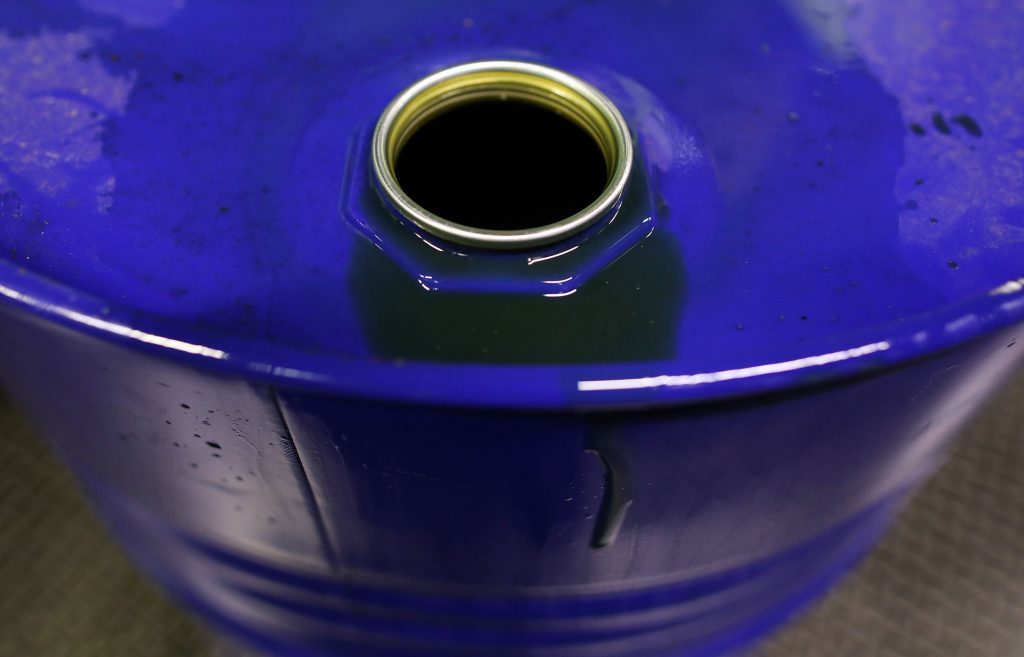
Things are looking up for oil and it’s bringing hedge funds back.
They haven’t been so bullish on Brent crude since March, and they increased their net wagers on rising West Texas Intermediate prices by the most since December. The two benchmarks are now both trading above their 200-day moving averages in a sign of strength, with Brent settling above $56 a barrel last week, and WTI above $50.
“The fundamentals are looking a heck of a lot better,” Phil Flynn, senior market analyst at Price Futures Group Inc. in Chicago, said by telephone. “We still think this market is a breakout to the upside waiting to happen.”
Things began looking brighter this month, after the U.S. Energy Information Administration lowered its 2017 production forecast and the International Energy Agency increased its estimate for global demand growth.
At the same time, efforts led by the Organization of Petroleum Exporting Countries to trim a global supply glut seem to be working. Excess inventories in developed economies, measured against their five-year average, have declined by about 74 million barrels, or 28 percent, since the start of the year, according to the IEA.
“Prices have been moving nicely, trending towards technical levels,” Bart Melek, a commodity strategist at Toronto Dominion Bank, said by phone. “People are going to be less reluctant to build long positions.”
The tide has turned particularly for Brent, with futures for near-term delivery increasingly trading at a premium to longer-dated contracts, a pattern known as backwardation that shows demand is exceeding supplies. The global benchmark for November delivery was at $56.80 a barrel compared to $55.55 for May 2018 settlement on Monday.
Brent is also trading at its widest premium to WTI in two years. That’s partly because U.S. crude stockpiles are still almost 100 million barrels above the five-year average for this time of the year, and production keeps rising.
But things are beginning to change in the U.S., too. Shale producers have idled 24 oil rigs over the past six weeks, indicating the drilling boom might have peaked. Harold Hamm, the billionaire shale pioneer who runs Continental Resources Inc., said last week that a government projection of more than 1 million new barrels a day in U.S. production this year is “flat wrong” because drillers are being more cautious about expanding.
Hedge funds boosted their WTI net-long position — the difference between bets on a price increase and wagers on a drop — 32 percent to 208,292 futures and options in the week ended Sept. 19, U.S. Commodity Futures Trading Commission data show. Shorts fell by 15 percent, while longs rose about 9 percent.
As for Brent, the net-long position on the global benchmark increased by 8 percent to 464,980 contracts, according to data from ICE Futures Europe. It has more than doubled since the end of June.
Meanwhile, the continuing fall-out from Hurricane Harvey has hedge funds betting that fuel prices will rise. Although Texas refineries knocked offline by the storm are coming back, it could be weeks before crude-processing capacity is restored.
“We’ve had massive draws on inventories of product, more than was expected,” Melek said.
Money managers raised their net-long position on benchmark U.S. gasoline by nearly 4 percent to 71,193, the highest level in more than three years. The net-bullish position on diesel climbed 11 percent to the highest since early 2013.
Whether the optimism over WTI will stick remains to be seen. After closing above $50 a barrel for the first time since July last week, prices for the U.S. benchmark got a bit stuck.
“It wouldn’t surprise me to see some longs come off, just taking some profits,” Tariq Zahir, a New York-based commodity fund manager at Tyche Capital Advisors LLC, said in a telephone interview. “That’s been the trade. Buy at $45, sell at $50 and until you consistently break that 200-day moving average to the upside, until you’re proven wrong with that, continue with that trade.”